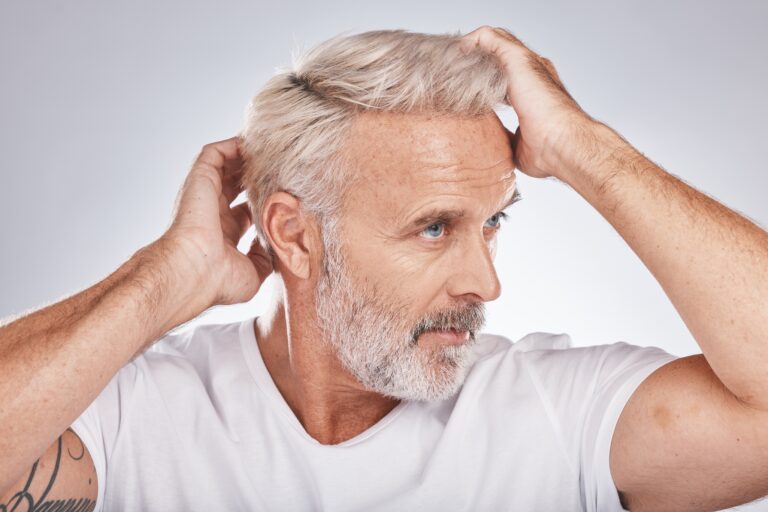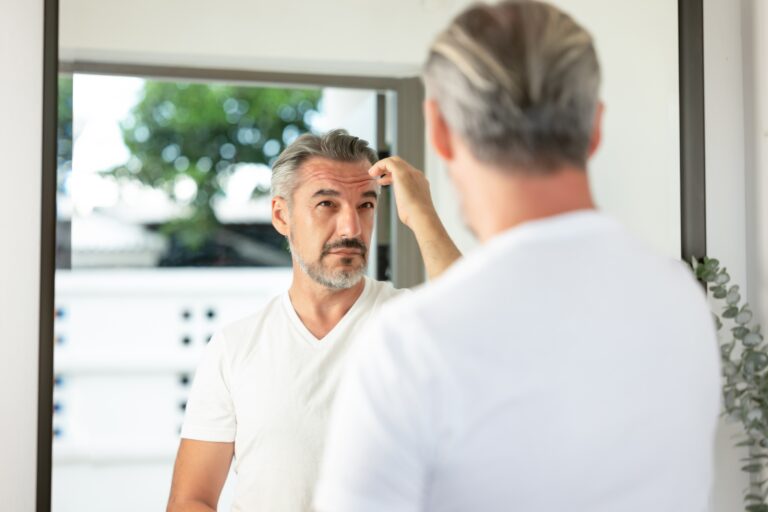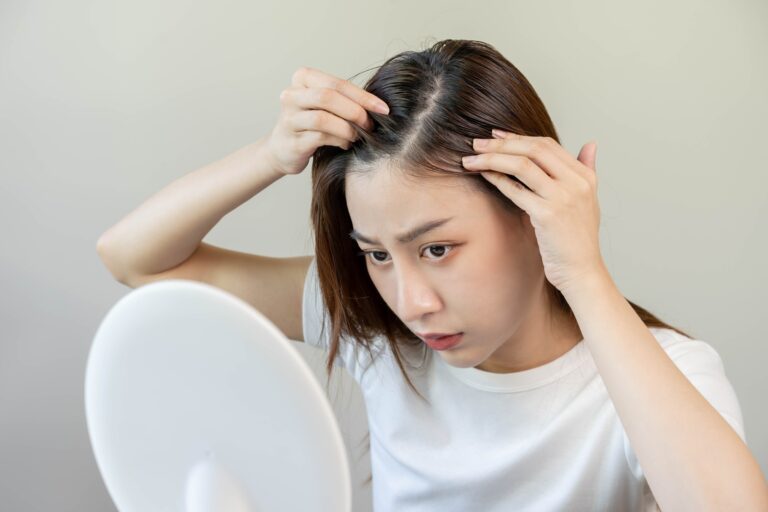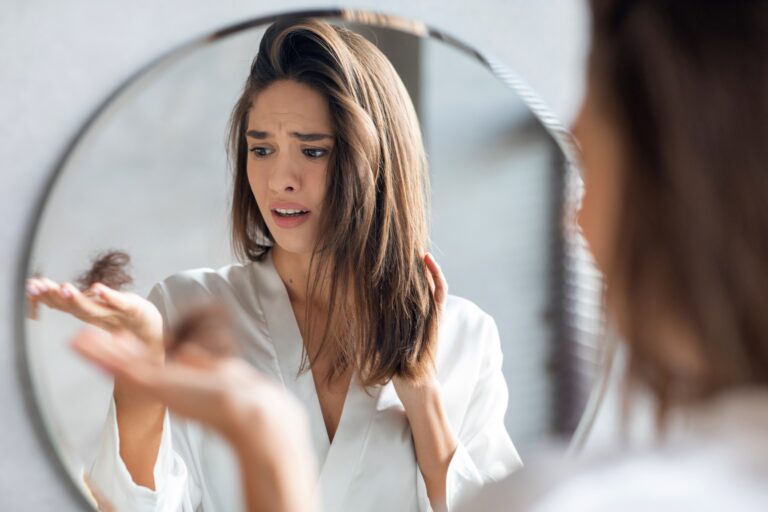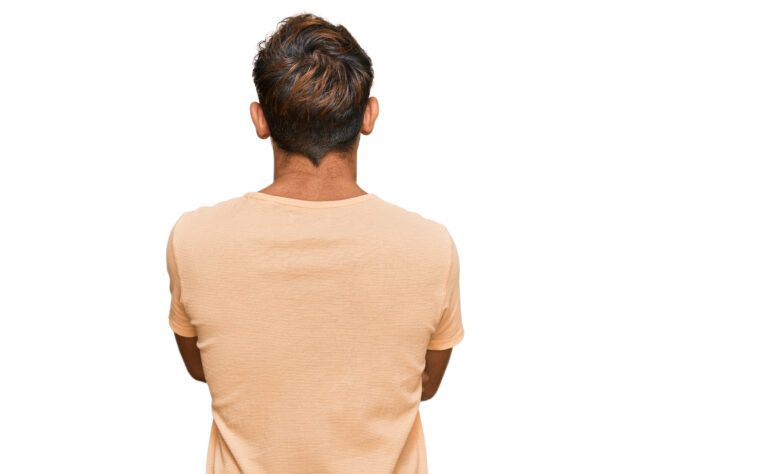Minoxidil For Women: Does It Work Side-Effect Free?
Hair loss is a common concern for many women, and it can have significant impacts on self-esteem and confidence.
Fortunately, there are treatments available to help combat hair loss. One of these options is minoxidil, also known as Rogaine. While minoxidil has been found effective in treating hair loss, it’s important to note that its use may come with potential side effects.
In this article, we’ll explore the use of minoxidil for women, its safety and efficacy, and its possible side effects. We’ll also discuss the safety considerations and guide you on whether it’s the proper treatment for you.
Minoxidil for Women: Does it Work?
Hair loss is something many people experience. It’s a common affliction that affects millions of women globally.
Luckily, minoxidil, a topical solution originally used to treat high blood pressure, has shown promise in combating hair loss in both men and women.
In this section, we’ll delve into the effectiveness of minoxidil in women in particular:
How Does Minoxidil Work for Women?
Minoxidil is a topical medication, or foam applied to the scalp. It works by widening the blood vessels in the scalp, which increases blood flow to the hair follicles. This increased blood flow can stimulate the follicles to grow thicker and stronger hair.
It can take several months of consistent use to see results, and the medication must be used continuously to maintain any hair growth achieved.
Proper Dosage and Application of Minoxidil in Women
The recommended dosage for women using minoxidil is typically a 2% or a 5% solution. It’s applied on the scalp, once or twice a day, depending on the instructions provided with the medication.
It’s crucial not to use more than the recommended amount. Plus, be careful not to get the solution on other parts of your body or let anyone else use it.
Clinical Studies on the Effectiveness of Minoxidil in Women
Several studies have evaluated the effectiveness of minoxidil in treating hair loss in women.
For example, one study found that women who used 2% minoxidil treatment for 32 weeks had more new hair growth in a small area compared to those who didn’t use the same treatment.
Moreover, this research found that subjects who used a 5% minoxidil solution for 24 weeks experienced more hair growth compared to those who used a 2% solution.
Although the success rates of minoxidil in women can vary, many see improvements in their hair growth after using the medication. In general, the earlier the hair loss is detected and treatment starts, the better the chances of success.
It’s important to note, however, that minoxidil isn’t a guaranteed cure for hair loss, and the effects may not be permanent.
Is Minoxidil Safe for Women?
There are several hair loss treatment options available for women. These include taking oral medications, getting hair transplant surgery, or trying out low-level laser therapy.
Each of these options has its own benefits and drawbacks, and the treatment will depend on the individual’s specific needs. With that said, many people consider minoxidil a safe choice for women.
Safety Considerations for Using Minoxidil in Women
Compared to the other treatment options for hair loss, many think minoxidil is the best choice because it’s usually safe and doesn’t cause too many side effects.
While this may be the case, you should keep in mind that everyone’s situation is different. So, it’s best to talk to a healthcare provider to find out which solution is best for you.
One thing to note is that if you’re pregnant or breastfeeding, you shouldn’t use minoxidil as there’s limited research on its safety in these situations.
Furthermore, if you have a history of heart disease or other medical problems, it’s a good idea to check with your healthcare provider before using minoxidil.
Side Effects of Minoxidil on Women
If you’re considering using minoxidil, also known as Rogaine, to treat hair loss, it’s important to understand the potential side effects. In this section, we’ll specifically focus on the side effects of Rogaine on women:
Potential Side Effects of Minoxidil on Women
Some of the common and mild side effects of the use of minoxidil include itching, dryness, and scalp irritation. Most often than not, these are temporary. In rare cases, women might see hair growing in other parts of their bodies.
Further, you might also notice some hair falling out. There’s no need to worry as this can be a sign that the medication has started working to stimulate hair growth.
In addition, there are severe side effects that could happen. If you feel chest pains, dizziness, or difficulty breathing while using minoxidil, seek medical attention immediately.
To minimize and prevent side effects, it’s a good idea to follow the directions that come with the product. Likewise, don’t use the medication on any broken or irritated skin as this could make the side effects worse.
It’s worth remembering that reactions to medications are different for everyone. Some people might be more likely to experience side effects than others.
Can Women Use Minoxidil 5?
Minoxidil comes in two strengths: 5% and 2%. The 5% solution has more active ingredients than the 2% solution.
The FDA approves the 5% solution for men with androgenetic alopecia, but not for women. You can buy the 5% solution without a prescription, but it’s a good idea to consult a medical professional before using it.
One clinical study showed that the minoxidil 5% solution is more effective than the 2% solution in promoting hair growth in men with androgenic alopecia. However, there’s limited data to show the difference between using both solutions in women.
Note that the higher solution may increase the risk of side effects. Due to this, women experiencing hair loss are advised to start with the 2% solution, and only switch to the 5% concentration if necessary and with their doctor’s supervision.
Does Rogaine for Women Work?
Hair loss in women can be caused by various factors. Rogaine, also referred to as minoxidil, has been used as a topical medication for hair loss in both men and women.
Rogaine has introduced products specifically for women in recent years, which has sparked discussions about their effectiveness.
Rogaine products for women come in two different formulations: 2% and 5% minoxidil. The 2% is the standard strength and is recommended for women with mild to moderate hair loss.
On the other hand, the 5% solution is recommended for women with more severe hair loss.
Clinical Studies on The Effectiveness of Rogaine for Women
Scientists have conducted several studies to determine how effective Rogaine is for women with hair loss.
This study revealed that the 5% treatment worked better than the placebo in improving hair growth. The 2% treatment also worked better than the placebo, but not as well as the 5% treatment. Both treatments were safe to use without any adverse effects.
Then, another research found that 60% of women using Rogaine experienced hair regrowth after 48 weeks of treatment.
The effectiveness of Rogaine for women can vary depending on the severity of hair loss and the concentration used. Some studies have shown that Rogaine can be effective in promoting hair regrowth in women, with success rates ranging from 30% to 60%.
However, remember that the results may vary with each individual, and not all women will experience the same level of success.
Can Women Use Rogaine for Men?
Rogaine, or minoxidil, is a medicine approved by the FDA to combat hair loss for both men and women. However, there’s often confusion around whether women can use the men’s version of Rogaine.
So, the question is, can women use minoxidil for men?
The concentration of minoxidil in the men’s formulation is higher than that in the women’s solution. The reason for this is that women are more sensitive to minoxidil, and higher concentrations may increase the likelihood of side effects.
Plus, the instructions for use of Rogaine for men and women differ.
Safety and Effectiveness of Using Rogaine for Men in Women
Some women may choose to use the 5% minoxidil formulation made for men, but this isn’t recommended.
Research has shown that the 2% minoxidil formulation for women works just as well for hair growth but with less risk of side effects.
Using the higher concentration meant for men could lead to adverse reactions, such as skin irritation, hair growth in unwanted areas, and changes in blood pressure.
It’s advised to stick to the recommended dosage and application instructions for the 2% minoxidil formulation marketed for men.
Understanding Hair Loss in Women
Hair loss in women has a variety of factors contributing to its onset.
While effective treatments are available, understanding the underlying causes and exploring alternative solutions is key to finding the best treatment:
Hair Loss in Women and Its Impact
Hair loss is a common condition that affects both men and women, but it can be especially tough for women. That’s because hair is often seen as a symbol of femininity and beauty, and losing it can really affect a woman’s self-esteem.
This can cause problems like feeling down, avoiding social situations, and feeling anxious or depressed. Female pattern hair loss (FPHL) is the most common type of hair loss in women.
It causes thinning hair on the top and front of the head. Studies show that it affects up to 50% of women over age 50.
Causes of Hair Loss in Women
Understanding the various causes of hair loss in women can help with early detection and appropriate treatment:
Genetics
Female pattern hair loss (FPHL), or androgenetic alopecia, is caused by a combination of genetics, hormones, and age. It’s characterized by thinning of hair in the crown of the head.
Hormonal Changes
Imbalances in hormone levels are another common cause of hair loss in women. When hormone levels change during menopause or pregnancy, it can affect hair growth.
Additionally, women who have thyroid disorders may also experience hair loss as a symptom of their condition.
Nutrition Deficiencies
Nutritional deficiencies can contribute to hair loss in women. Lack of certain nutrients, like iron, protein, or vitamins necessary for healthy hair growth, can make your hair thin out or fall out more easily.
Stress
If a woman has experienced chronic stress for extended periods, it can cause hormonal imbalances, which eventually lead to hair loss. Stress can also lead to hair-pulling behaviors like trichotillomania, which can damage the hair follicles.
Medical Conditions
There are certain medical conditions, like alopecia areata or lupus, that can make women lose their hair. Further, some medical treatments like chemotherapy or radiation can cause temporary hair loss.
Hairstyling Practices
Over-styling with hot tools, doing tight hairstyles like braids or weaves, or using chemical treatments over a long period can damage your hair follicles. This leads to hair loss over time.
Medications
Some medicines like blood thinners, antidepressants, or birth control pills can make your hair fall out as a side effect.
Alternative Treatments to Hair Loss
Aside from minoxidil, there are other hair loss treatment options available. However, it’s always best to consult a doctor before trying them out:
- Hair transplant surgery: A surgical procedure that involves transplanting hair from a donor area to a balding area.
- Low-level laser therapy (LLLT): A non-invasive treatment that uses low-level laser light to stimulate hair growth.
- Platelet-rich plasma (PRP) therapy: A treatment that involves injecting a patient’s own platelets into the scalp to stimulate hair growth.
- Finasteride: An oral medication that works by blocking the hormone DHT, a hormone that causes hair loss in some people.
Conclusion
To wrap things up, minoxidil is a well-known and effective option for treating hair loss in women.
However, using minoxidil can have side effects. They’re generally mild and can be minimized by following the recommended dosage and usage instructions.
While some women may experience no side effects, others may experience mild to severe reactions like scalp irritation or unwanted hair growth.
Women must consider the potential benefits against the risks of using minoxidil. In addition, they should consult a healthcare provider before starting any hair loss treatment.
This will help in determining the best option for their individual needs.


